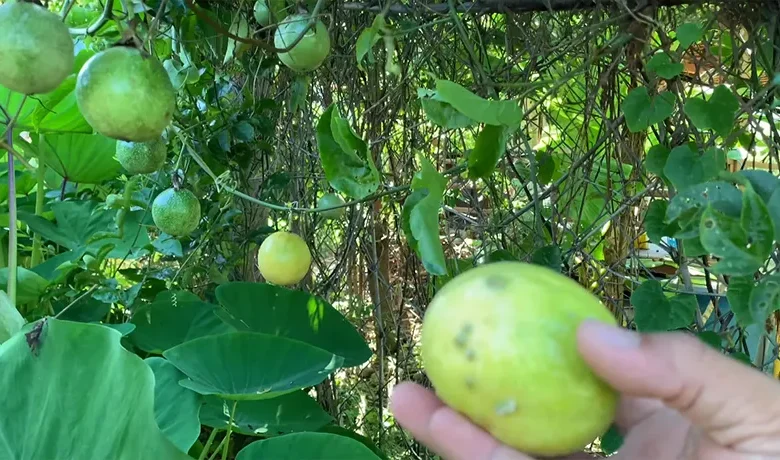Passion Fruit from Dominica

Passion Fruit from Dominica has emerged as a flavorful and lucrative crop, balancing the island’s traditional emphasis on bananas and root crops with the growing appeal of exotic fruits. Its distinctive sweet-tart profile fits fresh consumption and processed forms, from juices and jellies to dessert toppings. Spanning several parishes—including St. Joseph, Calibishie on the East Coast Road, and the interior near Pont Cassé—passion fruit vines benefit from Dominica’s fertile volcanic soil and frequent rainfall, yielding consistent harvests for smallholder farmers.
Production Figures and Growing Regions for Passion Fruit in Dominica
Passion fruit cultivation covers roughly 70–80 acres distributed among 40–50 small farms. According to 2022 data from the Dominica Rural Enterprise Project (D-REP):
- Annual production approached 120 metric tons, marking a 15% rise over the previous five years.
- About 20% of this output is directed to neighbouring island markets and select North American speciality stores.
- Farms typically measure between 1–4 acres, with many employing trellising to enhance airflow and sunlight exposure.
Key cultivation zones include gently sloping areas around St. Joseph and coastal plots close to Calibishie, where well-draining soil meets steady ocean breezes. These conditions reduce fungal pressure, encouraging vigorous vine growth. Some farms rotate passion fruit with bananas, ensuring a stable year-round income. Others follow guidelines from the Organic Dominica Initiative, opting for natural compost, cover crops, and integrated pest management.
Institutional and Government Support
Various organizations fortify the sector with training, financing, and market access:
-
National Association of Youth in Agriculture (NAYA)
- Conducts workshops on vine pruning, grafting, and marketing, particularly targeting first-time farmers.
- Emphasizes sustainability and climate-smart irrigation, decreasing reliance on chemical inputs.
-
Agricultural Produce Procurement Facility
- Coordinates local supply chains by linking farms to restaurants, hotels, and agro-processors seeking fresh or frozen pulp.
- Encourages farmers to standardize quality, packaging, and labeling for consistency in retail environments.
-
Dominica’s Ministry of Agriculture
- Oversees extension services that provide pest control advice, seedling distribution, and on-farm demonstrations.
- Works on policy frameworks to reduce import duties on agricultural tools and promote export partnerships under the National Export Strategy (NES).
-
Dominica Export Import Agency (DEXIA) (Limited Role for Passion Fruit)
- Shares market information on regional pricing, packaging laws, and transport logistics.
- Assists with minor administrative procedures for those shipping to niche overseas markets but plays a less direct role compared to other agencies.
Local Processing and Market Trends
Passion fruit stands out in Dominican cuisine, featuring in juices, pastries, and ice creams. A few domestic companies, including Higher Region Farms and Morne Dlo’s Farm, specialize in frozen pulp and jams—collectively processing around 15% of the total harvest. Farmers who meet these companies’ requirements for consistent size, sweetness level, and minimal defects typically see stable contracts.
Retail demand within Dominica is also robust, reflecting the fruit’s popularity in local beverages and Creole dishes. Grocery stores and roadside stalls sell fresh passion fruit during peak season (May–October), maintaining a farmgate price of around XCD 1.00–1.50 per fruit (US $0.37–0.56) depending on size and quality. Regional sales, primarily to Guadeloupe and Martinique, further enhance income. By adopting efficient cold chain management, producers reduce spoilage and optimize shipments in small volumes.
Outlook and Development Potential
Farmers and agricultural officials foresee steady expansion for Passion Fruit from Dominica. Investments in drip irrigation, shade covers, and modern nursery techniques are improving yields while mitigating climatic risks. The Dominica Rural Enterprise Project (D-REP) anticipates production could increase another 10–15% by 2025 if farmers continue receiving technical guidance and access to micro-financing.
This upward trajectory extends beyond raw fruit sales, as agri-preneurs explore secondary products like canned pulp, preserves, and specialty fruit wines. The government’s ongoing focus on diversifying away from a single-crop model aligns with passion fruit’s market advantages. Strong synergy among local farmers, regional distributors, and supportive entities—such as the Ministry of Agriculture and NAYA—positions Dominica’s passion fruit for continued success in both domestic and export landscapes.




